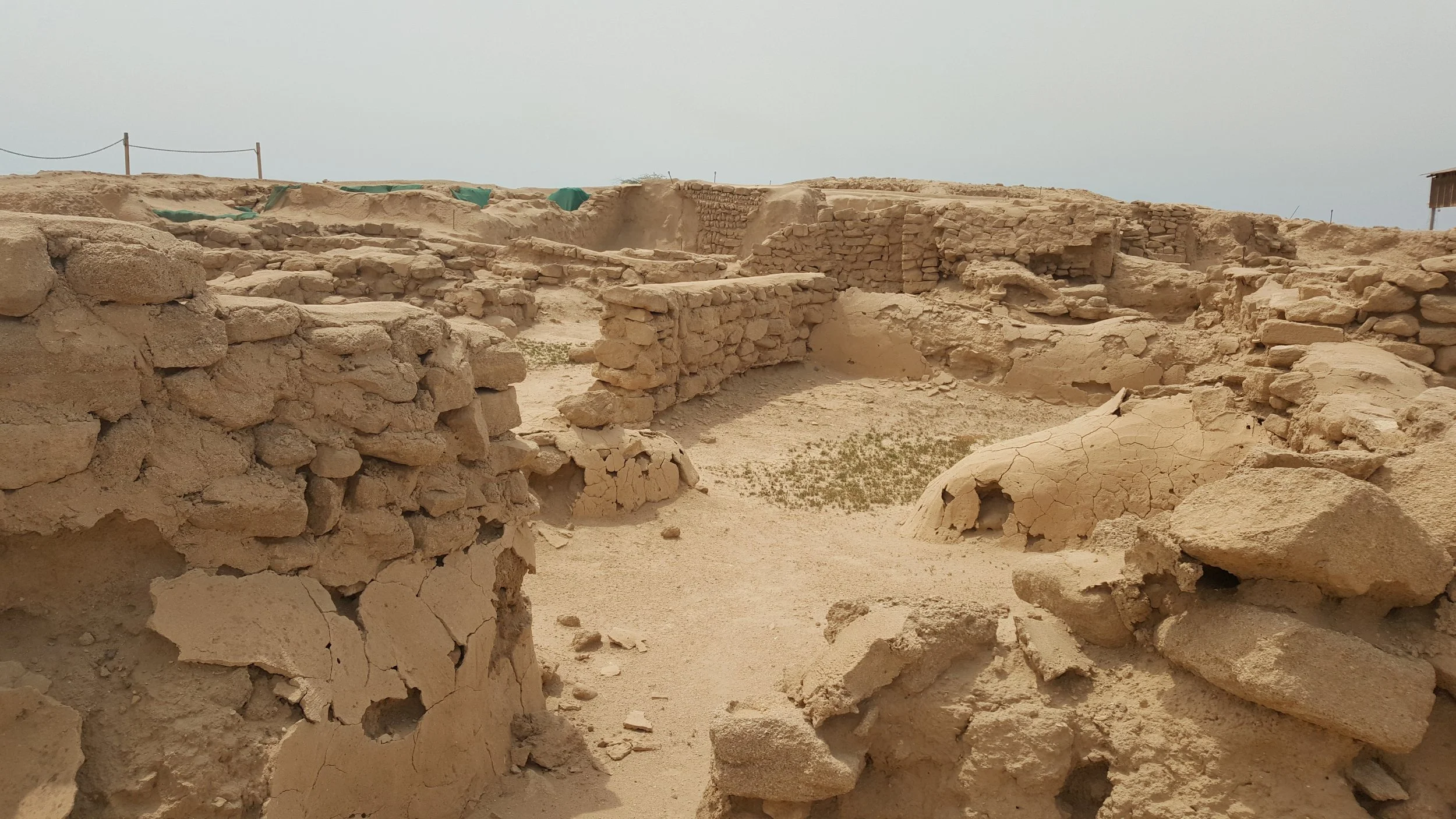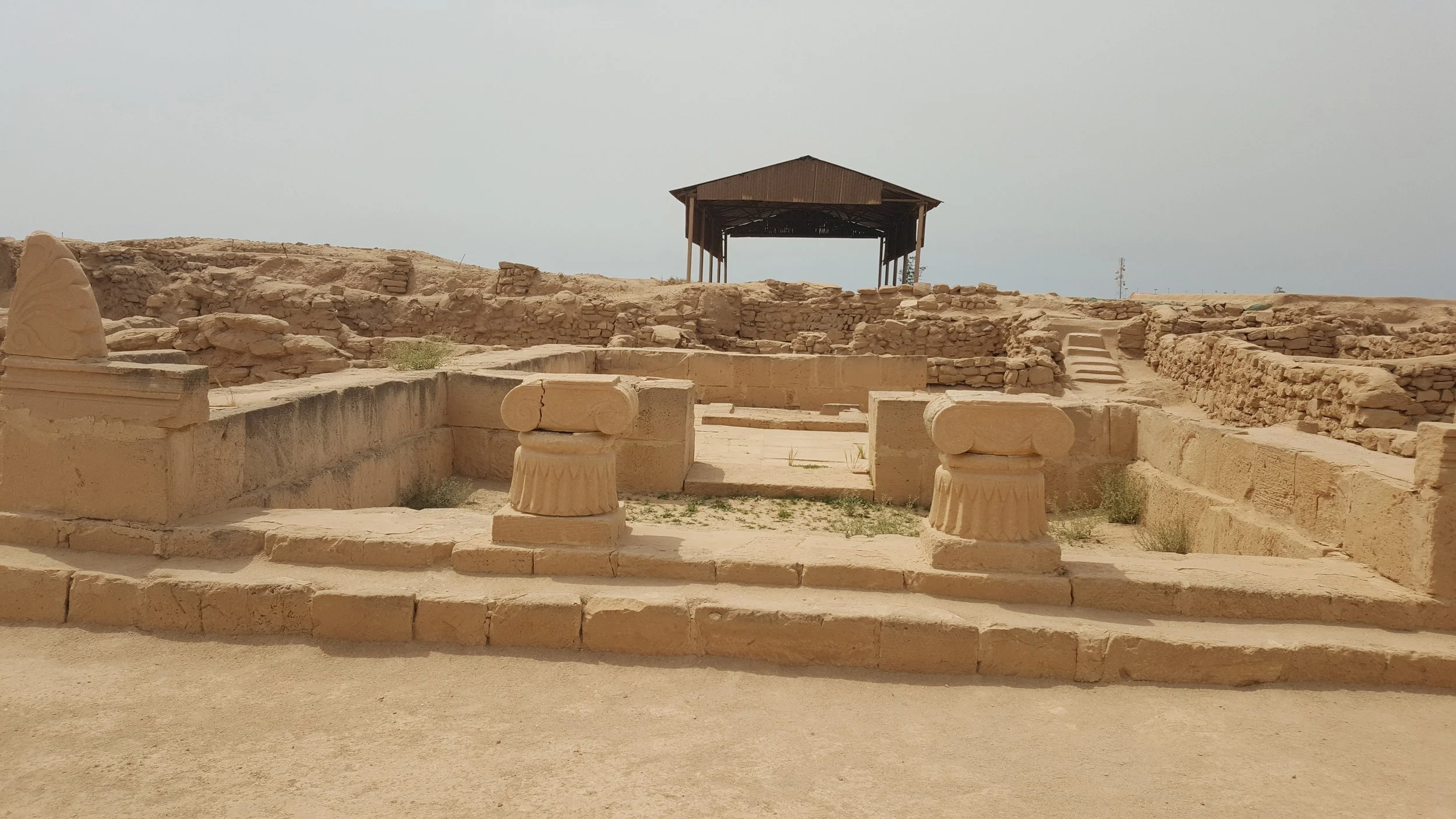Failaka: Island of Dilmun and Alexander the Great.
A Desert Island at the Crossroads of Empire.
Just 20 kilometres off the coast of Kuwait lies an island that has quietly held its ground against the tides of history. Today, Failaka may appear desolate — a scattering of ruins, dust-choked palm groves, and rusting war debris — but it was once a thriving hub that bridged East and West, myth and empire.
Failaka has been a Dilmun outpost linking Mesopotamia to the Indus Valley, a Hellenistic colony under the command of Alexander the Great, a cultural crossroads, religious site, military base, and later a modern warzone. This isn’t just a Kuwaiti island. This is a living museum of the ancient world.
The sun-scorched outlines of ancient walls — Failaka’s forgotten foundations.
The Dilmun Layer: Trade, Myth, and Sacred Ground.
Temple remnants believed to align with the solstice — sacred geometry meets Bronze Age belief.
Before Alexander's legions set foot here, Failaka was part of one of the most mysterious and influential Bronze Age civilisations the world has forgotten: Dilmun.
Dilmun spanned parts of modern Bahrain, the eastern Saudi coast, and several Gulf islands — including Failaka. Mentioned in ancient Mesopotamian tablets as early as 3000 BCE, it served as the maritime bridge between Sumer and the Indus Valley.
Dilmun thrived not through conquest, but commerce. It controlled sea lanes, freshwater access, and a reputation for neutrality and religious significance. Failaka, as its outpost, was a node in this glittering network — a waystation for goods like copper from Oman, timber and ivory from India, bitumen, carnelian, and lapis lazuli from Iran and Afghanistan.
More than just a trading post, Failaka was holy ground. The ruins of a sun temple to Shamash still stand, aligned with solstice light. Clay seals found nearby bear Dilmun iconography — horned animals, celestial symbols, and merchant marks.
“The land of Dilmun is pure, the land of Dilmun is clean... No one says, ‘I am sick,’ in Dilmun.” These ancient hymns, found in Sumerian poetry, describe Dilmun as a kind of paradise — a land of freshness, health, and eternal peace. It was believed to be the home of Utnapishtim, the Mesopotamian Noah.
On Failaka, that mythical purity met practical importance — it was sacred and strategic.
Alexander’s Shadow: The Island Becomes Ikaros.
Hellenistic stonework from when Failaka was renamed Ikaros by Alexander’s men.
In 324 BCE, history took another dramatic turn.
Alexander the Great, having conquered Babylon and marching east toward India, took a keen interest in this small Gulf island. Recognising its strategic location — a waypoint for Persian Gulf naval movement — he renamed it Ikaros, after the Greek island in the Aegean, and ordered a Hellenistic settlement to be built.
Greek temples with Doric column foundations, a grid-like city layout with public spaces, coin hoards bearing Greek script and iconography, pottery and architectural fragments consistent with Seleucid-period design — all have been uncovered here.
This wasn’t a brief stop. The Greeks stayed for nearly 200 years, and traces of their culture still lie beneath the sand.
Archaeological Layers: Civilisations in Sediment.
Thousands of years of history stacked in a single trench — from Sumerian jars to Gulf War casings.
What makes Failaka so fascinating is not one ruin, but the collision of timelines.
Excavators working on the island have unearthed artefacts spanning over 4,000 years — often within the same square metre. In one trench, you might find a Sumerian oil jar, a Greek coin, a fragment of Islamic-era glazed pottery, and not far from it, a spent bullet casing from the 1991 Gulf War.
It’s as though the island has never stopped being occupied — only interrupted.
Teams from France, Denmark, Kuwait, and Slovakia have taken part in archaeological missions here. Finds include Dilmun-style seals, Hellenistic pottery, figurines, bronze tools, and mysterious burial mounds yet to be fully explored.
Failaka is not a single story. It is a library, written in stone and salt.
A Temple Beside a Tank.
The most surreal aspect of modern Failaka is the juxtaposition of ancient sanctity with modern destruction.
In some parts of the island, you can walk from a 4,000-year-old sun temple past a Greek wall base into the ruins of a 1990s bank blown open by artillery.
Abandoned military trucks rust near Neolithic tombs. A camel grazes beside a bullet-riddled mosque. The archaeological team’s path to the dig site is marked by unexploded ordnance warnings.
The ghost of modern conflict beside sacred ruins — Failaka’s wounds are recent.
Rusting military vehicles watch over ancient soil — a relic of war on a battlefield of civilisations.
Why Failaka Matters.
Why should the world care about a dusty island in the upper Gulf?
Because Failaka is a mirror.
It reflects the ambitions of emperors, the rhythms of trade, and the chaos of modern conflict. It’s a symbol of how fragile and layered heritage can be, especially in politically sensitive regions.
For Echoes and Edges, this island represents everything we stand for — lost civilisations, hidden stories, and places on the margins that define the centre.
Failaka is where myths become maps, and where history doesn’t rest beneath the soil — it walks beside you in the dust.
Failaka remains — wind worn, war-touched and waiting to be remembered.








